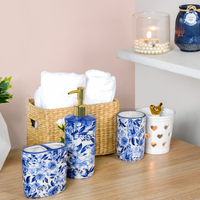In the contemporary era, home interior design has evolved to reflect our dynamic lifestyles, preferences, and technological advancements. However, many of us also crave a deeper connection to our roots, traditions, and spiritual beliefs. Striking a balance between modern aesthetics and spiritual traditions in home decor can create a harmonious living space that nurtures both the body and the soul. This blog explores how to integrate these seemingly disparate elements into a cohesive and enriching home environment.
The Intersection Of Modern Design And Spiritual Traditions
Modern interior design is characterised by clean lines, minimalism, and a focus on functionality. It often incorporates cutting-edge materials, open spaces, and neutral colour palettes. On the other hand, spiritual traditions in home decor emphasise symbolism, ritual, and the use of elements that evoke a sense of tranquillity, reverence, and connection to the divine. Balancing these two aspects involves thoughtful curation and mindful design choices that honour both contemporary tastes and spiritual heritage.
Understanding Your Spiritual Traditions
Before embarking on the journey of integrating spiritual elements into your home, it's essential to understand the core aspects of your spiritual traditions. This may include:
1. Symbols And Icons: Many spiritual traditions use specific symbols, icons, or deities that can be incorporated into home decor. For example, Hindu homes might feature statues of gods like Ganesha or Lakshmi, while Christian homes might display crosses or images of saints.
2. Sacred Spaces: Creating a dedicated space for prayer, meditation, or reflection is common in many spiritual traditions. This space should be serene, clutter-free, and imbued with elements that aid in spiritual practice.
3. Ritual Objects: Items such as prayer beads, incense holders, or sacred texts can be thoughtfully placed in the home to serve both decorative and spiritual purposes.
Modern Design Principles
To balance these spiritual elements with modern design, consider the following principles:
1. Minimalism: Modern design thrives on simplicity and minimalism. This can complement spiritual decor by allowing sacred objects and symbols to stand out without overwhelming the space.
2. Natural Materials: Using natural materials like wood, stone, and fabric can create a sense of warmth and connection to the earth, which is often a key aspect of spiritual traditions.
Also visit: https://nestasia.in/collections/wooden-decor
3. Neutral Colours: A neutral colour palette provides a serene backdrop that can enhance the calming and meditative qualities of spiritual decor.
4. Functional Spaces: Modern design emphasises functionality and practicality. Ensure that spiritual elements do not impede the functionality of your home but rather enhance the overall living experience.
Practical Tips For Integration
1. Create a Sacred Corner
Designate a small area in your home as a sacred space. Use modern furniture with clean lines to create a minimalist altar or meditation nook. Adorn it with meaningful spiritual objects and keep it free from clutter.
2. Incorporate Symbols Subtly
Integrate spiritual symbols into your decor in subtle ways. For instance, use throw pillows, wall art, or rugs that feature spiritual motifs but align with your overall colour scheme and design aesthetic.
3. Use Natural Light
Light plays a crucial role in both modern design and spiritual practice. Maximise natural light in your home to create a bright and uplifting atmosphere. Consider placing spiritual objects near windows or using sheer curtains to allow light to filter through.
4. Choose Calming Colours
Opt for calming, neutral colours like whites, greys, and earth tones. These colours can provide a serene backdrop for spiritual decor and enhance the overall tranquillity of your home.
5. Blend Old And New
Don’t be afraid to mix contemporary furniture with antique spiritual items. A sleek modern table can be the perfect platform for displaying a treasured family heirloom or spiritual artefact.
6. Mindful Arrangement
Arrange furniture and decor with mindfulness, ensuring that the flow of energy (or chi) is balanced. This concept, rooted in Feng Shui, can help create a harmonious environment that supports both modern living and spiritual well-being.
Case Studies And Inspirations
1. Zen Minimalism
Inspired by Japanese Zen principles, this style integrates simplicity and mindfulness. Incorporate low furniture, natural wood, and a few carefully chosen spiritual objects like Buddha statues or bonsai trees to create a peaceful, meditative space.
2. Scandinavian Sanctuary
Known for its clean lines and functionality, Scandinavian design can be a great canvas for spiritual elements. Use white walls, wooden floors, and simple, functional furniture. Add spiritual decor like candles, crystals, and sacred symbols in a way that complements the minimalist aesthetic.
3. Eclectic Harmony
For those who appreciate a more eclectic style, blend modern furniture with a variety of spiritual artefacts from different traditions. The key is to maintain balance and avoid overcrowding. Use a neutral colour palette to tie everything together and create a cohesive look.
Conclusion
Balancing modern home interior design with spiritual traditions is a deeply personal and enriching endeavour. It involves understanding and honouring your spiritual heritage while embracing contemporary aesthetics and functionality. By thoughtfully integrating these elements, you can create a home that is not only stylish and modern but also a sanctuary for your soul.
Remember, the ultimate goal is to create a space that resonates with you on a deeper level, where you can find peace, inspiration, and a sense of connection to both the present moment and your spiritual roots.



























